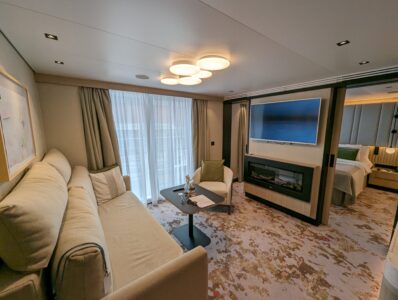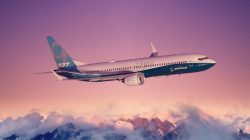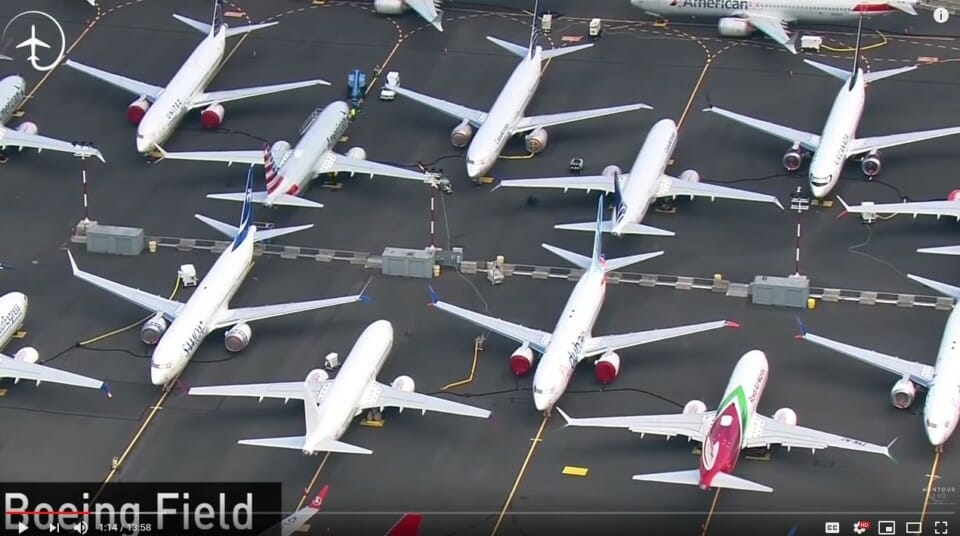Yesterday, I wrote about the process to get the Boeing 737MAX recertified by the FAA. This is a key milestone for Boeing in order for airlines to begin flying the 737MAX. Today, we will take a deeper look into how Boeing got into trouble with an airliner that has been in service since 1967.
Aircraft Design: Clean Sheet vs Upgrade Existing Aircraft
Aircraft manufacturers have essentially two ways to design an aircraft. Start from scratch which is known as a “clean sheet (of paper)” design. The other way is to take an existing aircraft and make modifications to compete with newer aircraft. Obviously, the clean sheet method is the most cost-intensive with all of the research and development (R&D) needed for a clean sheet design. The clean sheet method comes with enormous financial risks. The Airbus A380 is an excellent example of the financial risks with designing from scratch. Airbus spent $45 billion to develop the A380 program. They needed to sell about 1,000 aircraft to pay for the R&D costs which is known as the “break-even point”. Airbus sold around 300 A380s losing about $90 million per aircraft for R&D costs. The A380 program was a major loser for Airbus.
The other method is to take an existing aircraft and modify it into a new generation. The advantages of a modified design are:
- Lower R&D costs,
- A quicker design process,
- The ability to use existing parts,
- The ability to use existing manufacturing (jigs, tooling and facilities) and
- The ability to use employees that already know how to build the aircraft.
This is where Boeing ran into trouble with the 737MAX. They tried to put larger engines on the aircraft than the landing height could reasonably support. The 737MAX shares the same fuselage as:
- Boeing 707,
- Boeing 720,
- Boeing 727 and
- Boeing 737 series 100 through 900.
Design Philosophy – Boeing vs Douglas
To fully understand the 737MAX trouble, we have to go back to the early 1950s. Boeing was working on their first jet airliner, the 707. Douglas Aircraft was working on their DC-8 jet airliner. The two aircraft builders took two entirely different design approaches:
- Since jets were going to be a new aircraft type, Boeing chose a lower ground height to make ground handling easier for passenger airstairs and airport ramp workers.
- Douglas had a long history of stretching aircraft (DC-4, DC-6 and DC-7) so they built the DC-8 higher off the ground for that purpose.
The Boeing 707 started out with a length of 145 feet that was able to stretch to 152 feet. The Douglas DC-8 started at a length of 150 feet that stretched to 187 feet. The 707 had a typical maximum passenger seating of 179 passengers compared to 250 for the DC-8 series 63.
Aircraft engines in the 1950s and 1960s were turbojet or low-bypass ratio turbofans that were narrow in diameter which easily fit on both the 707 and DC-8. When wide-bypass ratio turbofans were developed, the DC-8 was easily refitted with CFM-56 wide-bypass ratio engines because there was enough ground clearance for the larger diameter jets.
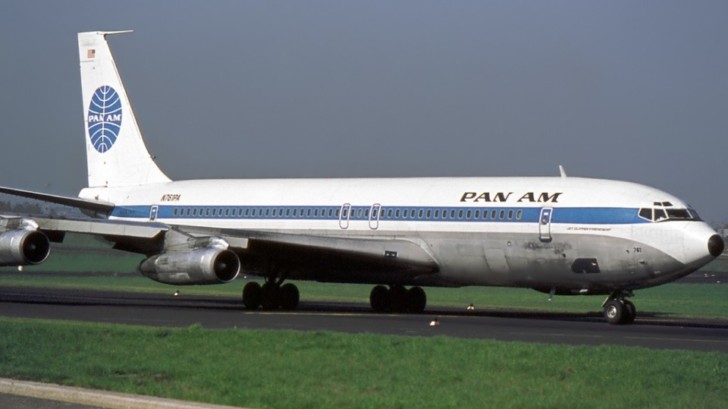
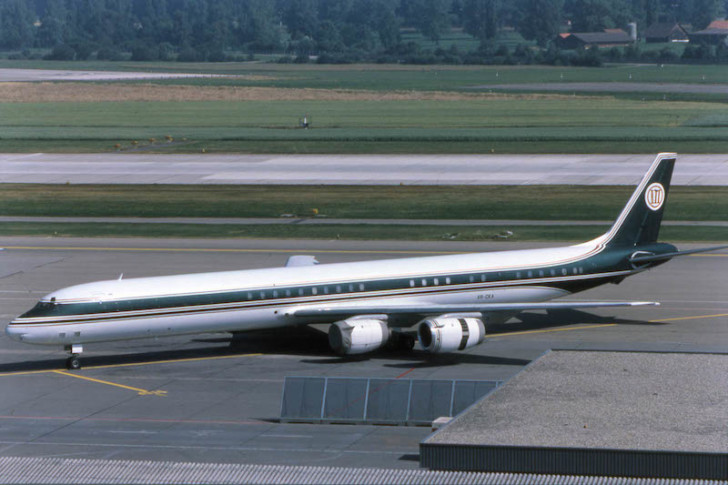
Design Philosophy – Boeing vs Airbus
The original 737 like the 707, 720 and 727 before it was built low to the ground for ground servicing at the gate. The 737 was designed in the mid-1960s when engines were narrow. The Airbus A320 family of airliners was developed in the early 1980s so wide-bypass ratio engines were the norm. For that reason, the Airbus A320 family of airliners sit higher off the ground. In 1984, Boeing launched the 737-300 with the new CFM56 engines. In order to maintain ground clearance, Boeing flattened the bottom of the engine nacelles (housing) to accommodate the CFM56 engine. The 737MAX LEAP-1 engine is even larger in diameter than the CFM56. This required Boeing to mount the LEAP-1 engines higher and further forward than the engine placement for the CFM56. This new engine placement changed the handling characteristics of the aircraft because the airflow over the wings changed. Due to structural limitations, the ground height for the 737MAX can’t be substantially increased. Boeing did design a trick nose landing gear for the 737MAX 10 which can extend another two inches.
Boeing told airlines that the 737MAX would not require additional pilot training. They were able to do so by creating the Maneuvering Characteristics and Augmentation System (MCAS) to transition pilots from previous 737 models to the 737MAX. This is the foundation for the problems that grounded the 737MAX.
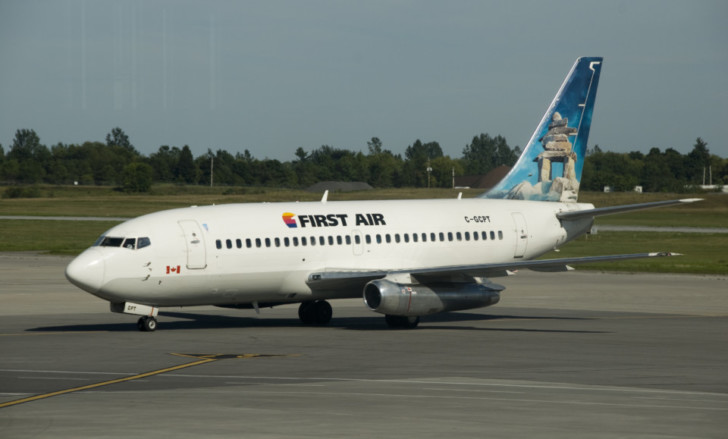
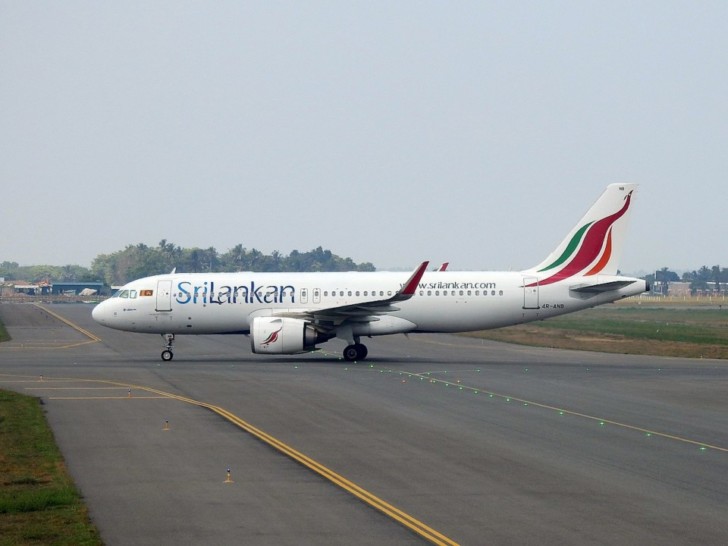
Obtaining International Airworthiness Certifications
It used to be that U. S. aircraft manufacturers would obtain an airworthiness certificate from the FAA. International bodies like the European Union Aviation Safety Administration (EASA) and Civil Aviation Authority of China (CAAC) would grandfather the airworthiness certificates from the FAA and allow U. S. made aircraft to enter service without additional certification. The new problem for Boeing is that the international aircraft safety agencies are not comfortable with the FAA process. This is because the FAA has allowed Boeing to self-police many of the certification steps in place of FAA engineers. This is because the FAA can not afford to employ experienced senior aircraft engineers. This has caused a relationship between Boeing and the FAA that some experts describe as too cozy.
EASA is likely to require additional improvements from Boeing. As I understand it, EASA will require the 737MAX to incorporate synthetic airspeed calculation like on the Boeing 787. Synthetic airspeed calculation uses inertial data, flight management computer data and data from the angle of attack (AOA) vanes to calculate airspeed. Pilots depend on airspeed accuracy to prevent aircraft stalling. Synthetic airspeed calculation was considered by Boeing for the 737MAX but it was deleted from the final design.
Final Thoughts
Boeing has tried to stretch the lifespan of an airliner that has been in passenger service for 53 years instead of designing a replacement for the 737. The 737MAX can fly safely without the MCAS system if pilots were trained on the new handling characteristics. MCAS was not engineered to work as it was designed due to many software flaws. Once Boeing gets FAA approval, the work is just beginning. Boeing will have to document and produce fixes for all of the 737MAX aircraft that have been produced. Pilots that will fly the 737MAX will have to undergo training in 737MAX simulators and receive a 737MAX type rating before flying the aircraft. Airlines will either have to purchase 737MAX simulators at a cost of about $15 million or rent simulator training for their pilots.


